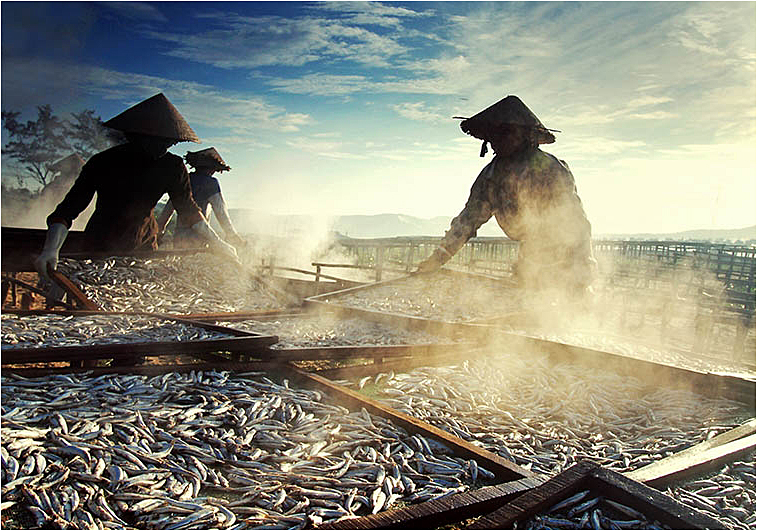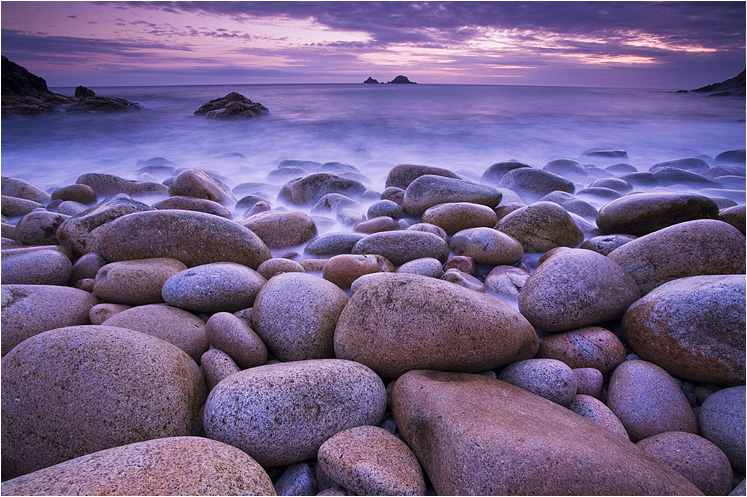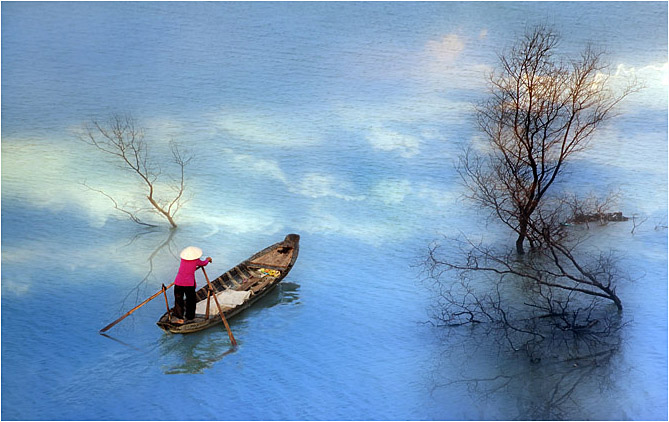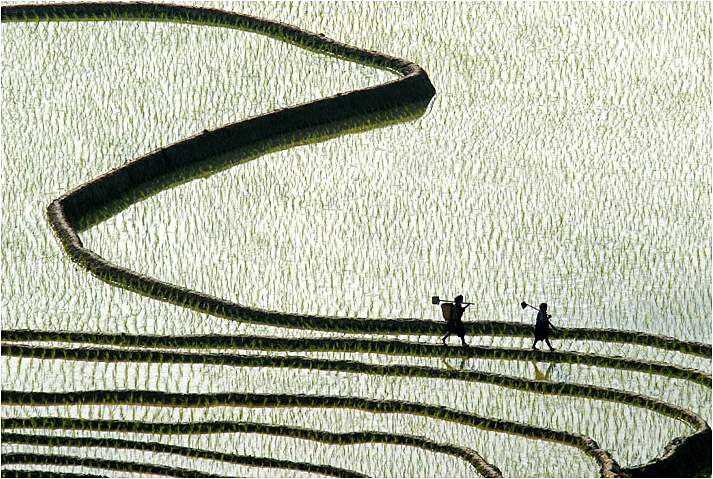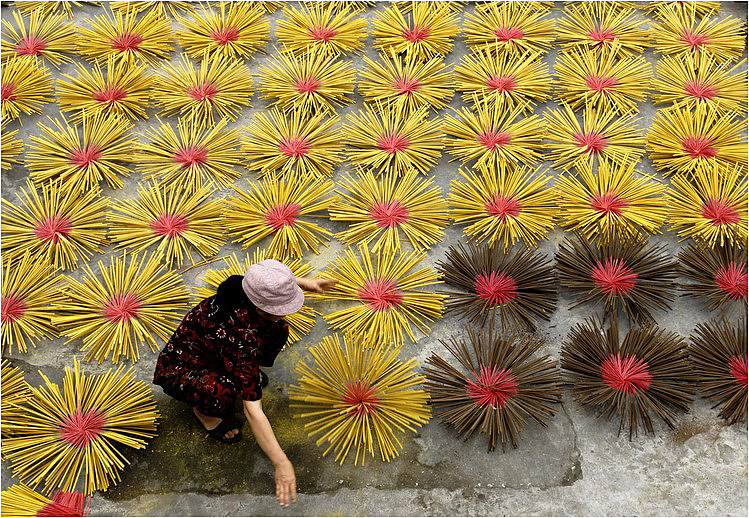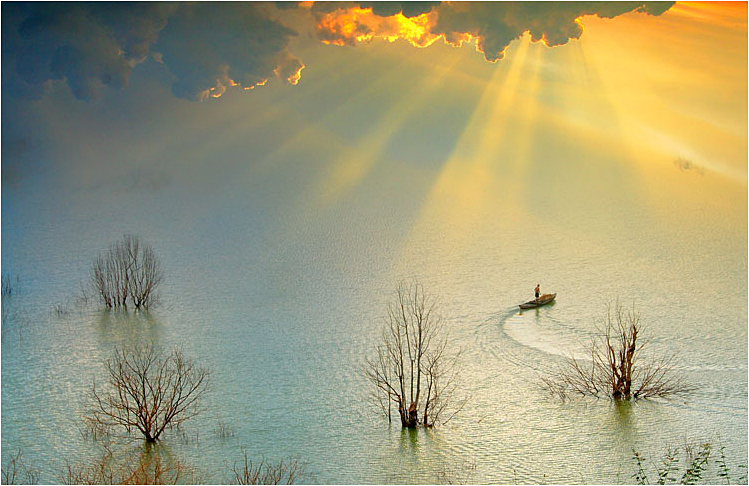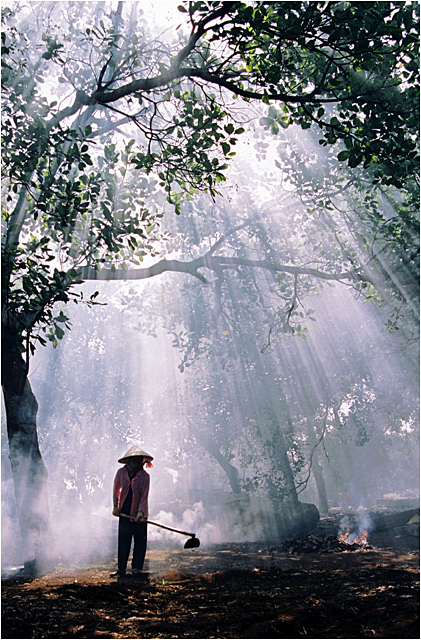

VIETNAM Tour Locations
Welcome to a world where the colors are more vivid, where the landscapes are bolder, the coastline more dramatic, where the history is more compelling, where the tastes are more divine, where life is lived in the fast lane. This world is Vietnam, the latest Asian dragon to awake from its slumber
Nature has blessed Vietnam with a bountiful harvest of soaring mountains, a killer coastline and radiant rice fields, Vietnam is a cracker. Inland, peasant women in conical hats still tend to their fields, children ride buffalos along country paths and minority people scratch out a living from impossible gradients.
Ho Chi Minh City (formerly Saigon). Saigon is a name so evocative that it conjures up a thousand jumbled images. Wander through timeless alleys to ancient pagodas or teeming markets, past ramshackle wooden shops selling silk, spices and baskets, before fast-forwarding into the future beneath sleek skyscrapers or at designer malls, gourmet restaurants and minimalist bars. The ghosts of the past live on in the churches, temples, former GI hotels and government buildings that one generation ago witnessed a city in turmoil, but the real beauty of Saigon’s urban collage is that these two worlds blend so seamlessly into one.
Whether you want the finest hotels, the classiest restaurants or the most humble street stalls, the designer boutiques or the scrum of the markets, Saigon has it all. The Saigon experience is about so many things – memorable conversations, tantalising tastes and moments of frustration – yet it will not evoke apathy. Stick around this conundrum of a city long enough and you may just unravel its mysteries.
 Can Tho is the main city of the Mekong Delta. It is the transportation center for the region, as it is connected to the other towns of the Delta by an extensive system of rivers and canals. The Mekong River is particularly wide there, and must be crossed by ferry, but it is along the smaller canals that most of the rural population lives. One of the most interesting sights in the Delta is the floating markets and associated river life. Near Can Tho, there are three different floating markets. Although they are well-known, the level of "commercialization" is still considerably less than the floating markets of Thailand. Often you won't see other travelers on the water at all.
Can Tho is the main city of the Mekong Delta. It is the transportation center for the region, as it is connected to the other towns of the Delta by an extensive system of rivers and canals. The Mekong River is particularly wide there, and must be crossed by ferry, but it is along the smaller canals that most of the rural population lives. One of the most interesting sights in the Delta is the floating markets and associated river life. Near Can Tho, there are three different floating markets. Although they are well-known, the level of "commercialization" is still considerably less than the floating markets of Thailand. Often you won't see other travelers on the water at all.
Binh Duong is considered to be good cropland, and agriculture is an important industry in the province. Bình Dương is also home to a significant manufacturing industry, and in the first half of 2004, the province had the second highest levels of foreign investment in Vietnam. Nike, Adidas, H&M and McDonald’s have set up factories to manufacture goods they sell locally and abroad in the province.
 Dai Nam Tourist Park is an interesting attraction found around 40km from Saignon which opened in November, 2008. Dai Nam Van Hien Temple is located within the site as well as entertainment site complex, shopping areas, open range zoo, hotels, Vietnamese and Western restaurants plus the country’s biggest man-made mountain range. Upon arrival, visitors first across the famous Dai Nam Quoc Tu Temple. The first floor contains historical artifacts whilst the second continues to be used as a place of worship. Exhibits of the various dynasties of Vietnam from Ngo to Nguyen are on show here.
Dai Nam Tourist Park is an interesting attraction found around 40km from Saignon which opened in November, 2008. Dai Nam Van Hien Temple is located within the site as well as entertainment site complex, shopping areas, open range zoo, hotels, Vietnamese and Western restaurants plus the country’s biggest man-made mountain range. Upon arrival, visitors first across the famous Dai Nam Quoc Tu Temple. The first floor contains historical artifacts whilst the second continues to be used as a place of worship. Exhibits of the various dynasties of Vietnam from Ngo to Nguyen are on show here.
Dai Nam Quoc Tu is otherwise known as Tu An Temple (or the Temple of Four Gratitudes), and acts as a reminder of the apparent origins of the Vietnamese people. Buddha, the Au Co Mother, the Hung Kings and President Ho Chi Minh all represented here. More than 50 billion dong was spent to build the park, despite the rather contrived origins, many locals rave about it especially the beautiful temple.
 Phan Thiet is the largest town in Binh Thuan province with an estimated population of close to 100,000 people. The town sits on the borders of Ca Ty river, is 20 Km from the ocean and swells with boats during the fishing season in the summer months. Fishing is Phan Thiet's largest industry. According to local statistics, some 100 different varieties of fishes are caught here with an annual yield of over 70,000 tons. As a result, Phan Thiet is famous for its Nuoc Mam (fish sauce), a seasoning used in Vietnamese cuisine.
Phan Thiet is the largest town in Binh Thuan province with an estimated population of close to 100,000 people. The town sits on the borders of Ca Ty river, is 20 Km from the ocean and swells with boats during the fishing season in the summer months. Fishing is Phan Thiet's largest industry. According to local statistics, some 100 different varieties of fishes are caught here with an annual yield of over 70,000 tons. As a result, Phan Thiet is famous for its Nuoc Mam (fish sauce), a seasoning used in Vietnamese cuisine.
 Mui Ne is 12 miles east of Phan Thiet. It has some of the most beautiful stretches of beaches in Vietnam. Some are lined with tall coconut trees, others lean against vast red sand dunes. The sand dunes in this area are shaped by the elements of the wind and therefore is a spectacular site to the visitors.
Mui Ne is 12 miles east of Phan Thiet. It has some of the most beautiful stretches of beaches in Vietnam. Some are lined with tall coconut trees, others lean against vast red sand dunes. The sand dunes in this area are shaped by the elements of the wind and therefore is a spectacular site to the visitors.
Phan Rang: Surrounding sites on offer include a few worthwhile Cham towers -- in fact a lot of Cham people still live in the area -- you'll notice the men, in particular, going about their business wearing their traditional white headdresses. Phan Rang is to be a good stop for craft lovers -- there are two Cham villages nearby, one specialising in weaving and the other in pottery. If you're a fan of dragon fruit, you're in the right place -- Phan Rang is said to grow the best in Vietnam
Quy Nhon is a seaside town with about 200,000 inhabitants, whose harbors are accessible to more than 4,000 boats and ships. This town is about 650 km far from Ho Chi Minh City. Being the cradle of the classic theatre "Tuong" and the martial art of Viet Nam, it used to be the important commercial centre of exchanging trade with China. The ancient capital of the Cham Tra Ban (1000-1471) is located 26 km far from Quy Nhon. Nowadays Quy Nhon is famous for its local products like bird's nests. The province has quite many Cham towers like Banh It Towers. The sandy beach here is good and right in the town.
Hoi An is a city on the coast of the South China Sea in the South Central Coast of Vietnam. It is located in Quang Nam province and is home to approximately 120,000 inhabitants. The city possessed the largest harbour in Southeast Asia in the first century and was known as Lam Ap Pho (Champa City). Between the seventh and 10th centuries, the Champas controlled the strategic “spice trade” and with this came tremendous wealth. The boats still used today in Hoi An probably have the same hull shape as those used by the Champas for ocean voyages.
Da Nang is the largest city in central Vietnam and one of the country’s most important ports. Ringed by mountains on one side and the East Sea on the other, Da Nang has numerous sites of natural beauty and historical interest. It has several white sand beaches with seaside resort.
 Hue is the capital city of Thua Thien - Hue province, Vietnam. Between 1802 and 1945, it was the imperial capital of the Nguyen Dynasty. As such, it is well known for its monuments and architecture.
Hue is the capital city of Thua Thien - Hue province, Vietnam. Between 1802 and 1945, it was the imperial capital of the Nguyen Dynasty. As such, it is well known for its monuments and architecture.
Hanoi is the capital and second-largest city of Vietnam. October 2010 will officially mark 1000 years of the establishment of the city. On this occasion, Hanoi has been named as one of the world's "Top Destinations 2010" . A mass of motorbikes swarms through the tangled web of streets that is the Old Quarter, a cauldron of commerce for almost 1000 years and still the best place to check the pulse of this resurgent city. Hawkers in conical hats ply their wares, locals sip coffee and bia hoi (beer) watching life pass them by. Witness synchronised t’ai chi at dawn on the shores of Hoan Kiem Lake while goateed grandfathers tug at their wisps over the next chess move. See the bold and beautiful dine at designer restaurants and cut the latest moves on the dance floor. Hanoi has it all: the ancient history, a colonial legacy and a modern outlook. There is no better place to untangle the paradox that is modern Vietnam.
Ha Long bay lies in the northeastern part of Vietnam and is 165 Km from Hanoi. Ha Long literally means descending dragon. Ha Long (or Bay of the Descending Dragon) is often touted by proud Vietnamese as the world's Eighth wonder. It is an UNESCO World Heritage site. This unique bay is with its thousands of islands. One of the main attractions of Ha long is the bay's calm water and the thousands of limestone mountains dotting the seascape. The Bay's water is clear during the spring and early summer. Some of the islands are quite large and there are small alcoves with sandy beaches where swimming is possible.
Sapa lies in the very north west of Vietnam near the Chinese border. Sapa is such a colourful town thanks to the H'mong and Dzao people from the local hill tribes who head into the town's market every day to trade their produce. There's a main market every Saturday when the place is packed but there's a lower key one every other day during the week. Spectacular scenery abounds on all treks in the area, from where you go on many trekkings and excursions, and visit the traditional ethnic peoples who inhabit this mountainous region.
-S.jpg)




